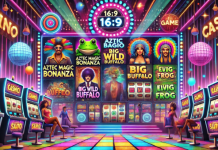The worldwide gaming market will soar from $174.9 billion in 2020 to $217.9 billion in 2023, according to Newzoo’s forecast. More so, by 2028, experts predict it will be worth $34.11 billion.
The exponential growth of the gaming business is due to several reasons. Some of these include the widespread availability of mobile devices, the development of novel game types, platforms, and the skyrocketing popularity of electronic sports.
Changes like this have been evolving and are here to stay. The introduction of the best online casino Australia sites is a big part of this evolution, showing how the industry is adapting to our digital world. The relentless quest for technical advancement is a defining feature of the gaming industry. As we look ahead to 2024, this article examines the five most exciting technology global trends that will impact the gaming sector.
Artificial Intelligence
The online gaming industry is now using AI, which is crucial for creating more realistic and captivating games. Developers can modify characters, locations, storylines, and gameplay to make them more engaging.
Soon, AI-powered algorithms will improve player experiences in various ways. Games will let players customise their experience, adapt stories to their choices, and change environments in real time. This will give each player a unique and personalised gaming experience.
AI is also enabling video games to have smarter virtual assistants. They can learn about each player’s strengths and weaknesses and provide strategic advice to help them progress in the game.
Current Trends in AI
Emotional AI plays a crucial role in focusing on recognising, assessing, and managing emotions. Game creators could eventually utilise it to design highly engaging experiences that trigger solid physical responses by understanding players’ speech tones, facial expressions, and other non-verbal signals. Going further, emotional AI might enable developers to design games that elicit genuine human feelings such as joy, anger, fear, and sadness.
Another advancement in artificial intelligence that will impact gaming is chatbots. A subfield of AI known as “conversational AI” is one of the latest technology trends that extensively uses natural language processing and generation to replicate human-machine discussions.
Social, narrative, and engaging gaming experiences are possible with conversational AI because players may have more in-depth dialogues with in-game characters, other players, and the game itself through speech or text.
Virtual Reality (VR)
Every gamer dreams of diving into a fantastic new world, and now it’s possible thanks to VR changing the gaming industry. With virtual reality tech, players can escape reality and experience a digital adventure, taking one step towards freedom. Your senses are tricked to make you feel like you’re in a different place. You can move around, interact with in-game stuff, and live the game in a virtual world.
Users get a whole new level of immersion and gameplay. As VR headsets get better, games feel more natural and exciting.
Bringing games into virtual reality is a big step forward. You might need to remember about the real world, lose track of time, and use all your senses in the game.
Cloud Gaming
Cloud gaming has been getting more popular lately, and experts think it’ll reach new heights in 2024. It lets you play games by streaming them directly from faraway servers, so you don’t need a super powerful computer or deal with slow downloads. This makes top-notch gaming available to people with anything from basic PCs to smartphones.
Cloud gaming is changing how we see gaming gear. With easy integration of cloud gaming platforms, the type of device you have won’t matter much. This leads to less conflict among gamers.
Playing games in the cloud isn’t just about accessibility. Instead of buying individual titles, you might soon subscribe to an extensive library. Shifting titles to the cloud will transform the industry, letting more people play high-quality games. Some cool things about this gaming style include:
-
5G tech gets rid of lag and delays, making cloud gaming superfast and fun.
-
With cross-platform gaming, you can keep your game stats, friends, and progress on all your devices.
-
“Cloud-native” activities are made for the cloud and stay there, unlike those that were moved or changed from traditional platforms. This makes them easy to access.
Augmented Reality (AR)
Augmented reality adds digital info or objects to the real world, making how users see and interact with things more interesting. AR is available on smartphones, tablets, headsets, and glasses.
The latter makes playing games more immersive and natural by putting lifelike images into your line of sight. Imagine playing a game where you see and interact with virtual characters, objects, or your surroundings in your room or anywhere. That’s the magic of AR!
Blockchain Technology
Encryption and decentralised networks allow blockchain-distributed ledger technology to store and transfer data securely. Blockchain technology paves the way for many digital applications, such as digital currencies, smart contracts, and digital identities.
The gaming industry has created a lot of one-of-a-kind digital assets using blockchain technology; these are called non-fungible tokens (NFTs). With the use of distinct tokens, everything will have a digital twin. Historically, there has been an NFT market where traders and consumers could deal. People may now buy and trade these virtual things in-game.
Fighting online gaming fraud and cheating is one area where blockchain technology has demonstrated potential. To measure against hacking and item duplication, we may use decentralised ledgers to record in-game transactions and object ownership securely.
Conclusion
The online gaming industry has witnessed extensive growth with the invention of many technologies. This article covered five emerging technology trends 2024 has in store for the iGaming industry. While these are not necessarily new, they’ll open up fresh opportunities for players and developers in the coming year. They will also usher in future technology trends and drive more growth in the industry.




